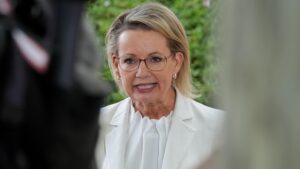
The Albanese government has announced the termination of a three-year freeze on pension adjustments, impacting the financial landscape for retirees in Australia. Tanya Plibersek, the Social Services Minister, made the announcement on July 1, 2023, during an economic roundtable event. This policy shift will adjust the rates used to calculate how much pensioners can earn from their cash investments, a change that could reduce payments for many retirees.
Under the new guidelines, the expected or “deemed” return on investments held by age pensioners, including self-funded retirees, will rise from 0.25 percent to 0.75 percent. The modification comes after more than five years without any changes to these rates. The adjustments are likely to provoke discontent among seniors, particularly those who opposed high deeming rates in 2019, as they come at a time when interest rates on savings accounts are declining.
Deeming is a method employed by the government to establish a uniform return on financial investments, such as savings accounts and term deposits. This approach simplifies the calculation of income rates for pensions. Instead of requiring pensioners to report their actual income from investments, a deemed rate is applied. Previously, the rates had been maintained at what Plibersek described as “artificially low” levels since the onset of the COVID-19 pandemic.
Plibersek noted that the government had kept these rates unchanged to “help shield age pensioners and other income-support recipients while the economy recovered.” However, since the freeze was established, bank deposit rates have risen, reflecting broader movements in the official cash rate set by the Reserve Bank of Australia.
The recent freeze on deeming rates ended just two months after the Albanese government took office, and it marks a significant policy shift from the Morrison administration. The upcoming adjustments are expected to create varying impacts on individual pension payments based on the financial assets held by retirees.
As the government navigates the complexities of economic recovery, the decision to modify deeming rates signals a move towards aligning pension calculations more closely with current financial realities. This adjustment may be viewed as a necessary step to ensure that pension payments remain equitable and reflective of actual market conditions, yet it may also add strain to the financial circumstances of many older Australians.
With the end of the freeze and the new deeming rate set, the Albanese government faces the challenge of balancing the need for fiscal responsibility with the imperative to support the country’s aging population.






